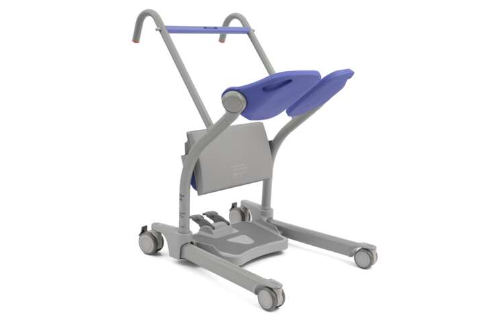
Devices to Help Someone to Stand Up
Share
Standing up from a seated position can sometimes be a challenge. Fortunately, various devices can significantly assist individuals in safely rising with minimal effort.
Understanding Stand-Up Assistance Devices
These devices come in a range of types, each offering varying levels of support. Here's a breakdown of some popular options:
- Grab Bars: These are sturdy bars mounted next to toilets, chairs, or beds. They provide a stable point to grip and leverage for standing.
- Standing Aids: These free-standing structures feature handles or bars for support while rising from a seated position. Some stand-up aids may also have a built-in seat for added comfort.
- Transfer Benches: These benches with backrests and arms are designed to bridge the gap between a chair or wheelchair and a higher surface like a bed. They provide a stable intermediate point to assist with standing.
- Sit-to-Stand Lifts: These electric or hydraulic lifts utilize a sling to gently elevate a person from a seated position to a standing posture. They are ideal for individuals with minimal leg strength.
Choosing the Right Device for Your Needs
Several factors influence which device is best suited for an individual:
- Strength and Ability: Consider the user's upper body strength and ability to bear weight on their legs.
- Safety Needs: For individuals at high fall risk, a device with greater support, like a sit-to-stand lift, may be recommended.
- Environment: Choose a device that fits comfortably within the available space around furniture.
Benefits of Using Stand-Up Assistance Devices
These devices offer a multitude of advantages:
- Easier Standing: They empower individuals to rise from a seated position with more confidence and less effort.
- Reduced Fall Risk: Stand-up devices provide stability and support, minimizing the likelihood of falls during transfers.
- Enhanced Daily Activities: Standing allows for easier participation in everyday routines and social interaction.
- Improved Well-being: Regular standing can improve blood flow, reduce stiffness, and promote overall health.
Stand-up assistance devices play a vital role in promoting safety, ease of movement, and improved quality of life for users. By consulting with a healthcare professional, you can determine the most appropriate device to meet individual needs and make everyday activities more manageable.
Disclaimer
The information provided in this blog is for general informational purposes only. It is not a substitute for professional medical advice, diagnosis, or treatment. Always seek the advice of your physician or other qualified healthcare provider with any questions you may have regarding a medical condition or treatment and before undertaking a new health care regimen.
Shop-Orthopedics is not a medical professional, and the content on this blog is not intended to be a substitute for professional medical advice, diagnosis, or treatment. Shop-Orthopedics makes no representations or warranties of any kind, express or implied, about the completeness, accuracy, reliability, suitability, or availability with respect to the blog or the information, products, services, or related graphics contained on the blog for any purpose. Any reliance you place on such information is therefore strictly at your own risk.

